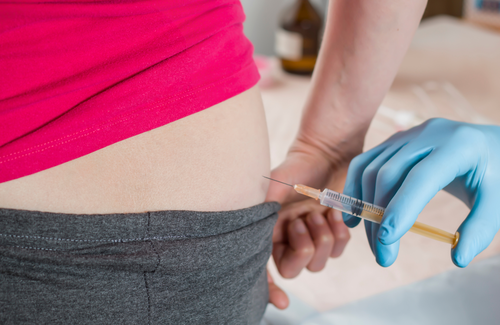
When it comes to HIV in heterosexuals, women are often at a disadvantage to men. Globally, they are more likely to have HIV, and to acquire it at a younger age; biologically and socially they are more vulnerable; and biomedical prevention studies have often produced poorer results, as has already been seen at the 30th Conference on Retroviruses and Opportunistic Infections (CROI 2023) in Seattle this week.
A study presented yesterday, however, provided somewhat better news. This analysis of the HPTN 084 study – which found remarkable efficacy for injections of cabotegravir as PrEP (regular medication to prevent HIV infection) in cisgender women – found that drug levels persist long enough in women to mean that an injection every three months, as opposed to every two months as in HPTN 084, might still be effective.
As well as simply being more convenient, quarterly dosing would mean PrEP injections could be given on the same schedule as injectable contraceptives.
Professor Mark Marzinke of Johns Hopkins University conducted an analysis of drug levels among women participating in HPTN 084 who missed the due date of their injections and so had longer gaps between them than scheduled.
The 90% inhibitory concentration of cabotegravir (the amount sufficient to reduce viral replication by 90%, known as the IC90) is 0.166 micrograms per millilitre (mcg/ml). Marzinke stratified drug levels measured immediately before the delayed next injection into:
- at least eight times the IC90 (1.33 mcg/ml),
- less than eight times but more than four times the IC90 (0.664 mcg/ml),
- between one and four times the IC90, or
- less than the IC90.
Because the first two injections are given one month rather than two months apart (in order to build up drug levels to a ‘steady state’), a significantly delayed second injection was defined as one that was four to six weeks late, i.e. eight to ten weeks after the first one.
After this, injections are scheduled every eight weeks. Marzinke grouped them into injections that were four to six weeks late (i.e. 12-14 weeks after the last injection), six to eight weeks late, and eight to ten weeks late (16-18 weeks or more after the last injection, indicating a completely missed injection). A gap of more than 18 weeks was regarded as stopping PrEP, whether temporarily or permanently.
Altogether there were 224 instances of delayed injections in 194 women (some had more than one delayed injection) among the more than 1600 women randomised to cabotegravir in the study.
In women whose second injection was delayed, the drug level remained at more than eight times the IC90 in 91% of women and more than four times in 100% of them.
In women whose subsequent injections were delayed, 98% had levels above four times the IC90 if their injection was four to six weeks late, 95% if it was six to eight weeks late, and 90% if it was eight to ten weeks late. The proportion with more than eight times the IC90 was 87%, 84% and 62% respectively. Only 1%, 2% and 5% respectively had levels below the IC90.
This would indicate that the vast majority of women would still have protective drug levels after a delay of up to six weeks (or up to 14 weeks after their last injection) indicating that a dose every 12 weeks should be enough to maintain efficacy.
So far there has only been one woman in HPTN 084, among those randomised to receive cabotegravir, who has acquired HIV despite receiving the injections. As aidsmap reported last year, she had nine injections but two of them were late. In the first gap, despite 15 weeks between injections, she still maintained drug levels of around eight times the IC90. But after a 16-week gap after her eighth injection, she tested HIV positive when she came for her ninth, and her cabotegravir level then was 0.25 mcg/ml or about 1.5 times the IC90.
How do women’s drug levels compare with men’s? In a comparison with the HPTN 083 study, which recruited gay and bisexual men and transgender women, only two factors were found that influenced the drug level seen before the next injection. One was obesity: participants with a body-mass index (BMI) of over 30kg/m2, the obesity threshold, had drug levels between the first two injections that were 30% lower than average, though they were only 5% lower between subsequent injections.
The other factor was biological sex. Between the first two injections, drug levels in women were actually 20% lower than in men. But between subsequent injections, they were 32% higher.
“This suggests," said Mark Marzinke, “that while quarterly injections will probably retain efficacy in women, we don’t have evidence that we can say the same for men.”
Marzinke M et al. Cabotegravir pharmacology in the background of delayed injections in HPTN 084. Conference on Retroviruses and Opportunistic Infections, Seattle, abstract 159, 2023.

